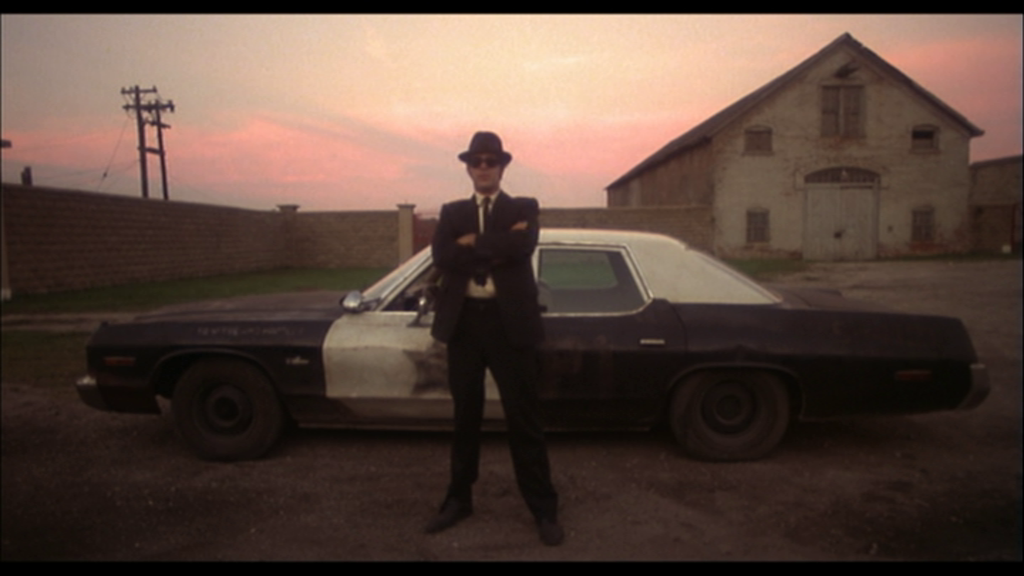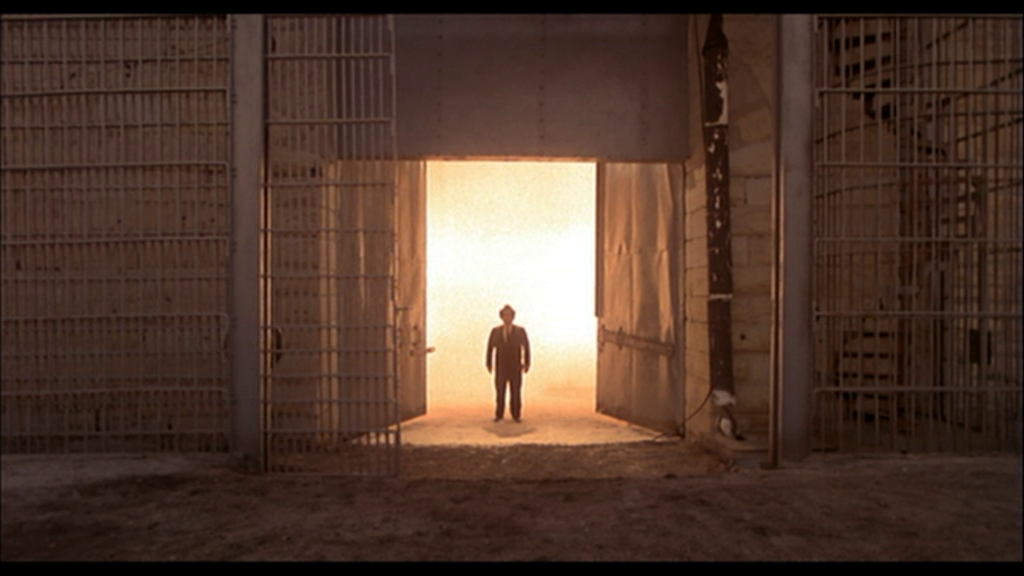This is definitely Lower Wacker Drive

Hadn’t watched THE BLUES BROTHERS since the early nineties, when I watched it way too much. Fiona hadn’t seen it. One benefit of the excess viewing is that the deleted scenes that have been added into the DVD really popped out. The movie is in my DNA, for better or worse. Also, you can really see why they were deleted.
From all those viewings — Edinburgh’s Cameo Cinema used to show this film regularly, and there was one memorable screening at The Playhouse too — I had noticed how cutty it is. I’m not sure if there’s a single shot longer than five seconds in it. In the extras, John Landis attributes this to using amateur dancers in some numbers — which I think works and is very sweet in the Ray Charles sequence — and having artists like Aretha Franklin who never sing the same way twice and therefore struggle to lip-sync. To those reasons we can perhaps add the fact that the Blues Brothers Band are musicians, not actors, plus the fact that the vehicular mayhem stuff was covered with lots of cameras, naturally, and yielded an embarrassment of riches.



The hero of the hour (or two) is George Folsey Jr., editor (son of cinematographer George J. Folsey of FORBIDDEN PLANET and THE BAND WAGON), though I note that Landis isn’t just shooting a ton of coverage, he knows at least most of the time what each angle is FOR.




There’s a particularly nice touch when the Bluesmobile, having transported our heroes 106 miles to Chicago under uniquely trying circumstances, collapses in a heap of scrap at the doors of the Cook County Assessor’s Office, and Folsey cuts to reaction shots from Jake and Elwood and also from the statues adorning the building. So we go from Laurel & Hardy clown car schtick to Eisenstein.
Praise to the editor, but Landis SHOT that statues for that specific purpose. THE BLUES BROTHERS is a film of huge excess — this yields benefits not only in the overwhelming spectacle but in little details like that — imagine a director shooting a statue reaction shot in a huge public location with hundreds of extras and cops and military standing around…

Oh, and the main thing that stood out this time is the reference to Chicago’s Lower Wacker Drive, since that street became painfully familiar to me making WHO IS BILL REBANE? MONSTER A GO-GO “climaxes” in this location. Given that Mayor Daley basically banned filming in his city after an episode of M Squad showed a Chicago cop taking a bribe, we can probably assume that Landis was the first filmmaker on Lower Wacker Drive since Bill Rebane (who also got remarkable cooperation in terms of police, fire engines etc…)
WHO IS BILL REBANE? is now listed on the IMDb.
June 1, 2021 at 1:22 pm
Bill and I gave this a lukewarm review back in 1982 in our book “Rock On Film” But the years have been kind to this epic silliness. Many of the performers on view here are no longer with us, and Belushi’s convulsive presence is truly special, particularly in light of hs sad end. Netflix released a rather good documentary about him recently. As for the overall mise en scene, John Hughes created the ultimate cinematic love letter to Chicago in his masterpiece “Ferrs Builler’s Day Off”
June 1, 2021 at 3:41 pm
Hughes’ Chicago is considerably more upscale than Landis & Ayckroyd’s, which delights in grunge. The helicopter shots of a petrochemical Blade Runner hellscape are a surprising way for this rather benign film to start, but probably central to its interest in urban blues…
June 1, 2021 at 8:54 pm
Never caught “Blues Brothers” somehow. But I paid cash money to see “Sgt. Pepper”, “Xanadu”, “1941”, and “The Fiendish Plot of Dr. Fu Manchu” in first-run theaters.
June 2, 2021 at 12:28 pm
TBB was frequently paired with 1941 (the directors cameo in each others’ films) in the British press as indulgent comedy flops, ignoring the fact that Landis’ film made money. Maybe it did poorly in the UK, initially — since Saturday Night Live never screened here, nobody knew the characters and the actors were only somewhat familiar.
I think it’s better than all of the films you saw, with the possible exception of 1941, where it comes down to taste.
June 4, 2021 at 5:04 am
I watched the movie over and over again in high school, and brutalized my parents by listening to their album on constant rotation. I have a bit more of a considered appreciation for both those things now, but I still like the movie quite a bit.
What I come back to in the film is the casting. Specifically, I think Henry Gibson as the nazi is the perfect just oddball enough choice. You’re right to point out the preponderance of non-actors in the cast, but surrounding them with actors who are able to just steal the scenes right out was a good decision.
June 4, 2021 at 4:37 pm
Gibson is glorious, as he always was. And I give the movie props for casting Steve Lawrence, who got too few big screen gigs.